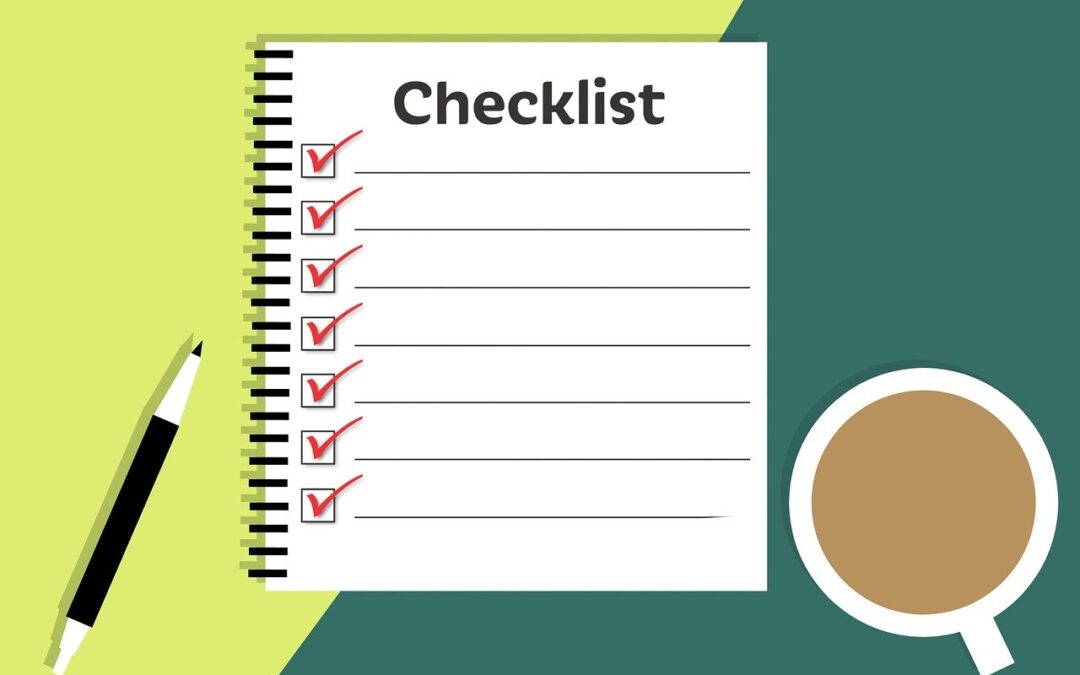
by Devon Bellamy | Sep 20, 2023 | Compliance, Employee Benefits, Human Resources
For many people, the workplace is their home away from home. For others, work is conducted from home. Regardless of whether you have a traditional work day or enjoy a remote or hybrid work schedule, you occasionally need a little flexibility in your life. During those times of need, many turn to FMLA to provide a bit of breathing room.
The Family and Medical Leave Act (FMLA) is a federal law that offers eligible employees of certain employers the right to take unpaid, protected leave for specific family and medical reasons. Covered employers must also maintain employees’ health benefits during this leave and guarantee their return to the same or equivalent positions afterward.
Many companies are subject to FMLA. These consist of public agencies and public or private schools, regardless of size. It also includes private-sector employers that have 50 or more employees during 20 or more workweeks in the year.
If your company falls under FMLA’s jurisdiction, this useful checklist can help ensure your compliance with FMLA.
FMLA Requirements
If your company falls under FMLA jurisdiction, you are required to display the FMLA poster where employees and applicants can easily see it. You can either use the U.S. Department of Labor’s (DOL) model poster or create your own.
You should also provide your employees with general notice about FMLA leave in the employee handbook. You can use the DOL’s model as an example. Your written materials regarding leave and benefits must contain all of the same information as the DOL’s model.
You are also required to maintain records related to FMLA compliance for at least three years.
Administering FMLA
The steps for administering leave are fairly straightforward. You should have an established method for tracking FMLA leave usage, including intermittent or reduced scheduled leave. You can create your own forms for administering FMLA leaves or use the DOL’s model forms.
Train your managers on FMLA compliance. They should be able to identify qualifying leave requests. It is also important that they understand the laws prohibiting interference and retaliation for requesting or taking leave.
Determining Eligibility for FMLA Leave
Eligibility for leave is based on specific criteria, the reason for the request, and whether the employee has available FMLA leave. To be eligible, an employee must meet the following requirements:
• Work for a company covered by the FMLA
• Worked for the company for at least 12 months
• Worked at least 1,250 hours for the company during the 12 months prior
• Works at a company with at least 50 employees
Qualifying reasons include caring for a newborn or adopting a child, dealing with a serious health condition, and military-related exigencies.
Eligible employees can take up to 12 weeks within a 12-month period.
Leave Process
Employers have the right to request a doctor’s note if an employee needs time off due to their own or a family member’s severe health issue. You can also ask for certification if the leave is related to military family matters. The Department of Labor (DOL) has standard forms like Form WH-381 that you can use for this purpose.
When an employee asks for leave, they should be told about this requirement. If medical certification is needed, they should be given the proper form along with the Notice of Eligibility and Rights & Responsibilities. They should have up to 15 calendar days to return it.
The Designation Notice states whether you decide to approve or decline FMLA leave. It should be given within five business days of the leave request (or when the certification is submitted if needed). You can use the DOL’s standard Designation Notice (Form WH-382) for this.
In Conclusion
As responsible employers, it’s vital to uphold certain standards to support your employees during their Family and Medical Leave Act (FMLA) journeys. It’s essential to remember that the specifics of FMLA compliance can differ based on unique situations and the presence of state or local regulations. This commitment to FMLA compliance not only benefits your employees but also strengthens your company’s commitment to their well-being and job security. You can use this as a guide to ensure the best support to your employees during their time of need. Review your company’s FMLA compliance, check out The 7 Steps for FMLA Compliance, and contact Launchways for further assistance.

by Devon Bellamy | Sep 12, 2023 | Employee Benefits, Human Resources, Mental Health in the Workplace
In recent years, the workplace landscape has undergone significant changes, largely influenced by the unprecedented events of the COVID-19 pandemic. As we approach 2024, a new trend has emerged that is taking precedence in the minds of corporate leaders and HR professionals alike: mental health.
Businesses have seen workers dealing with mental health issues, including anxiety, depression, or having problems with substance abuse. Unfortunately, the problem has worsened. In 2023, employers reporting mental health problems among their employees rose from 44% to 77%. As many as 16% believe the problem will continue to get worse.
Mental health concerns are not only impacting the employees of large corporations but also smaller businesses. To deal with this in 2024, employers are exploring strategies to prepare for mental health challenges that lie ahead for businesses of all sizes.
Mental Health Issues Also Affect Smaller Businesses
The growing awareness of mental health issues is not confined to large corporations; it extends its reach to smaller businesses as well. In fact, mental wellness challenges are often felt more acutely in smaller organizations due to limited resources and support systems.
Several factors contribute to the impact of mental health on smaller businesses:
Close-knit Work Environments: Smaller businesses often have a more familial atmosphere, which can be both a strength and a weakness. While it fosters strong bonds among employees, it also means that mental health issues are more visible and can have a cascading effect on team dynamics.
Limited Resources: Smaller businesses may lack the financial resources to invest in comprehensive mental health programs or hire dedicated mental health professionals. This limitation can make it challenging to provide adequate support to employees dealing with mental health concerns.
Stress and Workload: In smaller teams, a single employee’s absence or reduced productivity can significantly impact the overall workload. This can lead to heightened stress levels and burnout, further exacerbating mental health issues.
Lack of Awareness: Smaller businesses may not have the same level of awareness and education regarding mental health as larger corporations. This can result in a lack of understanding and a failure to recognize the signs of mental health challenges.
Given these factors, it is evident that mental wellness concerns are not limited to a specific company size or industry. Smaller businesses are equally affected, and addressing mental health issues is imperative for fostering a healthy workplace environment and sustaining employee well-being.
How Can Companies Prepare for Health Care Challenges Ahead?
As mental health takes center stage in corporate concerns heading into 2024, companies of all sizes must proactively prepare for the healthcare challenges that lie ahead. Here are some strategies that organizations can adopt to address mental health and promote mental wellness:
Create a Stigma-Free Environment
One of the first steps in addressing mental health in the workplace is to create a stigma-free environment. Encourage open conversations about mental wellness and ensure employees feel safe discussing their challenges without fear of judgment. This can be achieved through awareness campaigns, workshops, and training programs.
Implement Mental Health Programs
Offering mental health programs and resources is crucial. These programs can include Employee Assistance Programs (EAPs), counselling services, stress management workshops, and access to mental health professionals. Companies should invest in these resources to provide employees with needed support.
Flexible Work Arrangements
Flexible work arrangements, such as remote work options and flexible hours, can help employees better manage their mental health. These arrangements provide the flexibility to balance work with personal life and mental wellness.
Training for Managers
Managers play a pivotal role in supporting employees’ mental health. Provide training to managers on recognizing signs of mental health issues, having empathetic conversations, and connecting employees with appropriate resources.
Employee Wellness Initiatives
Wellness initiatives encompassing physical, mental, and emotional well-being can significantly impact. Encourage activities such as mindfulness and meditation sessions, fitness programs, and wellness challenges to promote overall health.
Evaluate Health Insurance Plans
Review and enhance health insurance plans to provide comprehensive coverage for mental health services. Ensure employees have access to mental health professionals and treatment without financial barriers.
Regular Surveys and Feedback Loops
Establish regular surveys and feedback mechanisms to gauge employee well-being and gather insights into the effectiveness of mental health initiatives. Use this data to refine and improve programs.
Inclusivity and Diversity
Promote inclusivity and diversity in the workplace, as a diverse workforce can bring unique perspectives and experiences related to mental wellness. Ensure that inclusivity is a core value of the company culture.
Encourage Work-Life Balance
Encourage employees to maintain a healthy work-life balance. Discourage overworking and emphasize the importance of taking time off when needed.
The Takeaway
As we approach 2024, mental health has risen to the forefront of corporate concerns, affecting both large and smaller businesses. Recognizing the significance of mental health in the workplace is the first step toward creating a healthier and more productive work environment.
Companies can prepare for the healthcare challenges ahead by adopting a holistic approach that includes destigmatization, the implementation of mental health programs, flexible work arrangements, manager training, wellness initiatives, improved insurance coverage, employee feedback mechanisms, and a commitment to inclusivity and work-life balance.
In the evolving landscape of corporate priorities, mental health and human resources professionals have a vital role in fostering mental wellness and ensuring that employees thrive professionally and personally. By addressing mental health challenges head-on, companies can build a healthier, more engaged workforce and better equipped to navigate the demands of the modern workplace.

by Jim Taylor | Sep 5, 2023 | Company Culture, Human Resources, Leadership
August has been an eventful month for government agencies overseeing workplaces. With new and returning rules pushed forward by both the National Labor Relations Board and the U.S. Department of Labor, employers and HR leaders need to take notice.
Companies should begin preparing now so they have less to do when the rules are finalized and implemented.
Here are a few of the key points for HR leaders to consider.
News From the National Labor Relations Board
Last week, the National Labor Relations Board (NLRB) announced returning to a rule that would reduce the time between a union expressing interest in representing employees and the actual union election. Around the same time, the NLRB also changed the process for unions to organize, making it easier for unions to organize and could even remove the need for an employee vote.
The Final Rule ensures the following steps occur more quickly to make pre- and post-election hearings more efficient.
- Pre-election hearing
- Distribution of election information to employees
- Ensures elections are held quicker
Chairman Lauren McFaren stated, “It’s the basic principle of the National Labor Relation Act that representation cases should be resolved quickly and fairly. By removing unnecessary delays from the election process, the new rule supports these important goals, and allows workers to more effectively exercise their fundamental rights.”
This could be good news for unions, but it may not be the best news for your company.
Recent polls show that support for labor unions is strong across many industries. Therefore, no industry is entirely safe from the possibility of unionization.
What Does This Mean for Your Company?
If you are an HR leader of a company at risk of unionizing, you should take these developments seriously. Building positive relationships with your employees is crucial to union avoidance.
Supervisor training plays a critical role in maintaining employee satisfaction and reducing the likelihood of unionization. Well-trained supervisors understand company policies, labor laws, and employee needs. This enables them to foster positive workplace environments.
When supervisors effectively communicate, provide support, and address concerns, employees feel valued and heard, diminishing their desire to seek representation through unions. Unfortunately, during the pandemic, supervisor training became something of an afterthought, and that is becoming evident.
News From the U.S. Department of Labor
In another recent development, the U.S. Department of Labor (DOL) has also proposed a new rule. This rule aims to raise the minimum salary that workers must earn to be exempt from overtime pay under the Fair Labor Standards Act.
Basically, the proposed rule would increase the minimum salary for exemption from $684 per week to $1,059 per week or $35,568 per year to $55,068 per year. The rule would also raise the “highly compensated employee exemption” from $107,432 annually to $143,988 per year. Furthermore, the DOL could automatically adjust these figures every three years.
What Does This Mean for Your Company?
Like most employers and HR leaders, you may need to figure out which jobs will be impacted by this proposed rule. Then you might weigh potential overtime implications against the following options:
- Employing measures to shift duties and reduce costs
- Switching employees from exempt to non-exempt
- Increasing employee salaries
While inflation has led many employers to increase salaries over the past few years, few have increased by the substantial margin that the DOL’s rule suggests.
What Can You Do?
Although the NLRB’s changes become effective December 26, 2023, the DOL’s rule is likely to be decided in late 2023 or early 2024. Until then, the DOL encourages the public to share their opinions before it implements a final rule.
Employers who might be affected by this new rule should definitely take advantage of the opportunity to provide feedback. The DOL is required to consider all public comments before making a final decision.
Although you should only make big changes once the DOL rule is finalized, it’s not too early to begin thinking about your strategy. That will make things easier when the final rule is eventually published.
When planning your response to the new NLRB rules, you should immediately fortify your HR department and begin training your supervisors and managers. Trained supervisors can resolve workplace issues promptly and fairly, addressing employee grievances without needing third-party intervention.
That not only strengthens the employer-employee relationship but also contributes to a harmonious work environment that is less susceptible to unionization efforts.

by Devon Bellamy | Aug 29, 2023 | Employee Benefits, Human Resources, Mental Health in the Workplace
Mental health continues to be a hot topic of conversation among HR leaders and health insurance providers. Recently, the Departments of Labor (DOL), Health and Human Services (HHS), and the IRS proposed a rule to amend the existing Mental Health Parity and Addiction Equity Act (MHPAEA).
With the DOL’s recent request for input from Group Health Plans and issuers regarding Nonquantitative Treatment Limitations (NQTLs), companies should prepare. They can anticipate ongoing discussions about how mental health benefits are administered.
Following their proposed rule, the three departments issued their second yearly report to Congress. In it, they examined mental health parity according to the rules of the Consolidated Appropriations Act of 2021 (CAA).
Here are the highlights.
Common Issues With Mental Health Parity
Unfortunately, only a few Group Health Plans did well. Most failed to meet the criteria guaranteeing equal treatment between medical/surgical and mental health benefits. Furthermore, according to numerous comparative analyses, many issuers still needed improvement. This was even after receiving multiple warnings.
Problems with parity concerning mental health benefits could be categorized into six groups.
- Annual dollar limits
- Limits on treatment, such as coverage duration, frequency, visit count, etc.
- Overall lifetime dollar limits
- Financial prerequisites, such as co-payments, coinsurance, deductibles, etc.
- Accumulated financial prerequisites
- Benefits across all categories
Incidentally, this is an excellent checklist for companies to start reviewing their mental health benefits. The goal is to streamline the review process and lessen the burden on health plans. This establishes a data-driven method for assessing whether these limitations comply with the law.
Although few issuers will undergo government audits, they are still required to comply with the rules. Therefore, the evaluation of benefits through an NQTL analysis and adoption of tactics to ensure parity is necessary.
Reviewing Mental Health Benefits
Take the time to review agreements with your plan’s providers. Plans are fiduciaries. That means, as employers, you are responsible for decisions regarding MHPAEA compliance. There are a couple of things to consider as your company reviews its plan design and benefits.
- How successful is the existing language at addressing mental health benefits?
- Do restrictions or limits exist for mental health issues that do not exist for medical/surgical benefits?
As a decision-maker for your company, you should know your plan’s benefits regarding mental health. In fact, you should be capable of explaining them to employees.
Completing an NQTLs Analysis
Conducting an NQTLs analysis is a given. It has been required since February 2021. In the future, group health plans will be required to gather and assess relevant data. At a minimum, that includes data required by state laws regarding NQTLs and details about the number and percentages of denied claims. This helps determine how NQTLs affect access to mental health and substance use disorder benefits.
For ERISA plans, a named fiduciary may certify compliance with the rules and a review of the results. They must verify when the analysis is completed and cooperate with an audit if needed.
If the MHPAEA Proposed Rule is accepted, the new requirements apply to plans beginning January 2025. Until then, companies must continue to comply with the existing MHPAEA and CAA requirements.
Key Takeaways
In conclusion, carefully reviewing agreements with plan providers is crucial. Take a close look at the agreements you have with plan providers. The employer is held accountable for any mistakes or choices related to compliance with the MHPAEA. That holds true whether the plan is fully insured or self-funded.
For self-funded plans that work with one or more TPAs (Third Party Administrators), schedule time for discussions about benefits. These conversations should help companies to:
- Engage in the necessary actions
- Pose the right questions
- Carry out a thorough analysis
For fully insured plans, pay attention to the specifics. You should thoroughly understand your plan’s mental health benefits so you can explain them to participants.
This proactive approach is essential. It ensures that mental health parity is upheld and participants receive the benefits to which they are entitled.

by Jim Taylor | Aug 24, 2023 | Human Resources, Mental Health in the Workplace
In recent years, there has been an increased focus on employee well-being and mental health. When the pandemic struck, it affected the work life of many people in varied and unexpected ways. Issues like childcare, healthcare, and remote work have become everyday concerns for many companies. This new reality led to new and renewed concerns about work-life balance, employee burnout, and “Zoom fatigue.” People found themselves working longer hours and taking fewer vacations, worried about losing their jobs. Overall, this has had a negative impact on the collective mental health.
With the added economic instability, the situation can create unhealthy and toxic work environments. Employees might feel like they can’t speak up for fear of retaliation, causing them to be anxious and stressed. This is why psychological safety is so important. It’s the ability to express oneself without fear of retaliation. When employees feel psychologically safe, they can be themselves, take risks, admit their mistakes, ask for help, and communicate honestly.
While companies have historically invested in physical safety in the workplace, psychological safety hasn’t always been a priority. It’s often seen as a nice-to-have instead of a necessity. This needs to change. Companies should prioritize employee mental health and make investments in psychological safety. By doing so, employees can feel safe and comfortable at work, leading to better performance, improved teamwork, and a more positive work environment.
What Is Psychological Safety?
Psychological safety is the belief that one can speak up, take risks, and express oneself without fear of negative consequences. In the workplace, psychological safety allows employees to share ideas, ask questions, and make mistakes without fear of punishment or ridicule. It creates an environment where employees feel comfortable and confident in their ability to express themselves and take risks.
Why is Psychological Safety in the Workplace Important?
Psychological safety is important in the workplace for several reasons. It fosters open communication and collaboration among employees. When employees feel safe to express their thoughts and ideas, they are more likely to work together and share knowledge, leading to better problem-solving and innovation.
Plus, it promotes employee well-being and mental health. When employees feel psychologically safe, they are less likely to experience stress, anxiety, or burnout. This can lead to increased job satisfaction, improved productivity, and reduced absenteeism.
What Are the Challenges?
Creating a culture of psychological safety in the workplace can be challenging. Many workplaces are hierarchical, with a clear power dynamic between managers and employees. This can create a culture of fear and prevent employees from speaking up or taking risks.
Additionally, there may be cultural or societal norms that discourage open expression and risk-taking. Overcoming these challenges requires a concerted effort from both management and employees.
How Can Employers Promote Psychological Safety in the Workplace?
First, employers can encourage open communication and collaboration among employees. This can be done by creating opportunities for employees to share their ideas and thoughts, such as team-building exercises or brainstorming sessions.
Second, employers can foster a culture of trust and respect. This can be achieved by valuing employees’ opinions, being transparent with information, and treating employees fairly and respectfully.
Third, employers can provide training and resources to help employees develop communication and conflict-resolution skills.
Finally, employers can create policies and procedures that support psychological safety, such as whistleblower protections and anonymous feedback channels.
In Conclusion
Psychological safety is an important concept in the workplace that promotes open communication, collaboration, and employee well-being. Creating a culture of psychological safety can be challenging, but employers can use HR solutions to promote it.
By fostering open communication, promoting trust and respect, providing training and resources, and creating policies and procedures that support psychological safety, employers can create a workplace where employees feel safe to express themselves and take risks.

by Jim Taylor | Aug 17, 2023 | Human Resources, Mental Health in the Workplace
Mental health is an essential aspect of well-being that affects every aspect of our lives, including work. According to the World Health Organization, mental health issues can affect productivity and work attendance, leading to significant economic consequences. Addressing mental health in the workplace is crucial to ensure a supportive and healthy work environment for employees.
Companies can play a massive role in raising mental health awareness and making it easier for employees to access help. This can be done by implementing meaningful initiatives and creating an environment where people feel comfortable asking for support.
An October 2022 survey by the American Psychological Association found that nearly 30% of American adults struggle to function due to their high levels of stress, while 76% report that their stress is clearly affecting their health. Mental health issues caused by stress in the workplace are a growing concern, prompting employers to wonder whether they should be doing a better job of providing mental health services.
In order to ensure that their employees are healthy and productive, HR leaders need to prioritize mental health services.
Understanding Mental Health Issues in the Workplace
The mental health needs of Americans have traditionally been ignored. With the COVID-19 pandemic and civil unrest that followed, awareness of this issue has increased, making it easier to speak about it openly. Before employers can address mental health issues, however, it’s crucial to understand the common mental health concerns that employees may face.
Some of the most common mental health issues in the workplace include depression, anxiety, and burnout. However, many employees may hesitate to speak up about their mental health struggles due to the stigma surrounding mental health.
Even though negative stereotypes still exist, real progress has been made in shifting this attitude. Employers must recognize the impact of mental health issues on employee productivity and well-being.
Signs and Symptoms of Mental Health Issues
Employers should be aware of the signs and symptoms of mental health issues. Symptoms can include changes in mood, behavior, and productivity. Physical symptoms such as headaches, fatigue, and digestive problems can also be signs of mental health issues.
Untreated mental health issues can lead to a significant reduction in work performance and productivity. Employees may experience difficulty concentrating, completing tasks, and making decisions.
8 Tips for Creating a Supportive Workplace Culture
The workplace environment has a significant impact on employees’ mental health. Creating a supportive culture that encourages open communication and support can help reduce the stigma associated with mental health issues. Provide a safe and inclusive workplace that values employee well-being by implementing the following steps.
- Implement a confidential workplace stress assessment and take action based on the results. You can purchase an assessment tool or collaborate with your health partner to create a customized one that caters to your employee population. Quarterly assessments are advisable, as they normalize the process and highlight seasonal stressors.
- Encourage mental health conversations to become a regular part of your company culture. Leaders and managers can share their own experiences with stress and the strategies they use to manage it while also encouraging their teams to do the same. It’s crucial to consistently promote your behavioral health programs rather than merely listing them in your benefits guide or burying them in the Employee Assistance Program (EAP).
- Encouraging employees to take breaks and time off can help reduce work-related stress and burnout. Promoting healthy lifestyle habits such as exercise, healthy eating, and adequate sleep can help improve mental health.
- Offering flexible working arrangements such as remote work, flexible hours, and job sharing can help employees manage their work-life balance and reduce stress levels.
- Collaborate with a behavioral health provider that is suitable for your employee population and offers both in-person and virtual access. Providing access to mental health resources such as counseling, support groups, and mental health hotlines can help employees manage their mental health.
- Providing training on mental health awareness can help employees recognize signs of mental health issues and promote a supportive workplace. Employers can organize workshops, training, and awareness campaigns to educate employees about mental health issues and how to support colleagues who may be affected.
- Employers should take responsibility for stressors within their control that could be creating a toxic environment. They can identify and address work-related stressors contributing to poor mental health. This can include providing a manageable workload, offering support for time management, and ensuring employees have the necessary resources to complete their work effectively.
- Encouraging employees to seek professional help when needed is crucial to managing mental health issues. Employers can provide a list of mental health resources or offer an EAP that provides access to confidential counseling services.
Promoting mental health awareness campaigns can help reduce the stigma associated with mental illness. Employers can organize workshops, training, and awareness campaigns to educate employees about mental health issues.
In Conclusion
Simply saying that you care about your employees’ mental health is not enough; you must ensure that your programs and policies reflect this. For instance, employers should provide accessible mental health resources and allow flexible time off to attend mental health-related events during work hours without the need for clocking out or taking a personal day.
Addressing mental health in the workplace is crucial for promoting employee well-being and productivity. Employers can take steps to create a supportive workplace culture. They can be mindful of the language used when discussing mental health and avoid using diagnoses as personality traits. Such language can contribute to stigma and may prevent individuals from seeking the help they need.
If a company provides an in-house therapy solution, it’s crucial to ensure that the office is not located near the HR leader’s office. While behavioral health is becoming more mainstream, privacy is still vital. By taking these steps, employers can help create a healthy and supportive workplace environment that values employee well-being and benefits both employees and the company as a whole.

by Brian Beyerbach | Aug 10, 2023 | Human Resources, Leadership
Human resources (HR) is a crucial department within any organization, as it plays a critical role in managing the people who make up the workforce. It’s common knowledge that HR is responsible for recruiting, training, retaining, and developing employees. However, HR members are also responsible for ensuring compliance with employment laws and regulations, as well as fostering a positive workplace culture.
In recent years, the role of HR has evolved beyond these traditional responsibilities. HR is now tasked with driving organizational transformation and aligning its people and business strategies. In order for HR to contribute effectively to the growth of the business and be effective in this expanded role, it needs to be more methodical in its approach.
In other words, HR must elevate its position to be on par with leadership.
To comprehend where to properly apply their efforts, HR leaders must establish a good rapport with business clients.
Building a bond of trust will help them understand the underlying causes of their clients’ work business concerns and determine optimal ways for achieving the goals set.
Here are some key methods HR can use to elevate its position.
Strategic Alignment
The first step is to understand the business. HR needs to analyze the company’s goals and objectives and then identify which workforce needs are required in order to achieve them. Leaders should demand to be included in the organization’s management team and strategic planning efforts.
By working closely with senior management, HR can gain a deeper understanding of the organization’s goals and strategies. This understanding can help HR ensure that the organization has the right people, skills, and capabilities to achieve its goals.
Collaborate With Business Leaders
HR leaders must collaborate with key leaders from other departments, such as finance, IT, and marketing. This collaboration ensures that businesses make economic decisions regarding talent management, granting employees the necessary tools and resources to remain productive and helping organizations become more desirable employers. It allows the organization to run smoothly and achieve its objectives.
Change Prediction and Management
Organizational transformation requires significant change, and HR can play a critical role in helping businesses stay on top of the most recent trends and manage them. HR leaders need to remain current on all internal and external changes, as these can tremendously impact the business. To stay competitive in the job market, it’s vital to be aware of what the latest tools and systems are, as well as other changes in technology.
By elevating its position, HR can provide leadership and guidance to employees and help them navigate the changes that come with this and any other organizational transformation.
Performance Management
Data analytics is an integral part of the modern workforce. In particular, HR roles are far more dependent on data-driven insights than ever before.
HR must establish a performance management system aligning with the company’s goals and objectives. This involves setting clear expectations for employees, providing regular feedback on their performance, and using data to identify areas for improvement.
Modern technology has enabled HR managers to take proactive action and utilize data for making intelligent forecasts regarding the possibility of employee turnover, recognizing employees predisposed to climb up the corporate ladder, and fine-tuning the work atmosphere, etc.
Attracting and Managing Talent
Talent acquisition is one of the most critical functions of HR. It involves building a strong employer brand, implementing an effective recruitment process, and hiring for long-term success. HR needs to create an environment that attracts top talent to the organization. This can be achieved by promoting the company’s values, culture, and opportunities for growth.
Retaining top talent is critical to the success of any organization. By elevating its position, HR can develop and implement effective talent management strategies that enable the organization to attract and retain the best people.
HR Needs to Fight for a Seat at the Table
Being an effective team member goes beyond just working quietly in the background; they need to have their voices heard. HR leaders must recognize and articulate the bottom-line impacts of their own initiatives. This will further enable decision-makers to recognize the impact of their efforts on the bottom line.
Therefore, it’s important to measure, track, and communicate the success of your activities to ensure your contribution isn’t overlooked. By doing so, HR can contribute significantly to the growth and success of the organization.

by Brian Beyerbach | Aug 3, 2023 | Compliance, Diversity & Inclusion, Human Resources, Mental Health in the Workplace
There are several reasons companies should pay attention to the potential Equal Employment Opportunity Commission (EEOC) trends for 2023 and prepare accordingly. As the EEOC targets which areas of human rights and protection it wants to focus on for the next few years, companies scramble to anticipate where they might be falling short. One key area of focus is on promoting diversity and inclusivity within the workplace, particularly concerning the LGBTQ+ community and ADA rights.
The EEOC has indicated that it will be closely monitoring the treatment of LGBTQ+ individuals in the workplace, particularly with regard to harassment and discrimination. Companies should take proactive measures to create a safe and inclusive workplace for all employees, regardless of sexual orientation or gender identity.
In addition to promoting diversity, companies should also consider implementing training programs to educate employees on the importance of creating an inclusive workplace. This includes providing resources and support for LGBTQ+ employees, such as employee advocacy groups and non-discrimination policies.
What is driving the EEOC trends, and what can businesses do to prepare?
Litigating Power in 2023
The EEOC is composed of five individuals. In 2023, it is anticipated that the political balance will tip to the left and there will be a democratic majority. With the goal of worker equality through employer accountability and employee recourse, the EEOC democratic majority could flex its power to investigate and prosecute cases of discrimination.
Add to that, the 60-million dollar budget increase, and the commission will have the motive and the means to more aggressively pursue EEOC-Initiated Litigation for the foreseeable future.
Protecting Diversity in Industry
As the primary federal agency responsible for enforcing laws against discrimination in the workplace, the EEOC recently released its Strategic Enforcement Plan (SEP) for 2023 through 2027.
During the fiscal year 2022, its plan of action included the following:
- Addressing selected developing issues
- Preventing systemic harassment
- Eliminating recruiting and hiring barriers
- Protecting vulnerable workers
- Ensuring equal pay protections
- Preserving access to the legal system
To that, the proposed SEP for 2023-2027 includes additional measures to protect people with pregnancy-related medical conditions and LGBTQ+ individuals in the workplace.
Diversity has been missing in many industries, including construction and many high-tech fields, which are rapidly growing sectors that receive a lot of governmental support. This is something that needs to be addressed urgently.
Systemic cases are generally given priority when it comes to pursuing legal action against discrimination. However, if an individual or a small group brings up a policy, practice, or pattern of discrimination that needs to be addressed, then their claim may also be considered.
Recent Trends in Litigation…
Recently, some of the worst cases of discrimination the EEOC has uncovered have been in the construction industry.
Due to the $1.2 trillion federal Infrastructure Investment and Jobs Act, Congress passed in 2021, the EEOC feels obligated to ensure the massive budget isn’t used to haphazardly promote or enable harassment or discrimination in the field. During the last half of 2022, the EEOC filed multiple lawsuits with construction firms that resulted in $2.8 million in settlements.
Further LGBTQ+ Protections
In 2020, the U.S. Supreme Court determined that Title VII of the Civil Rights Act of 1964 could be used as the grounds for sex discrimination cases since gay or transgender employees would fall under its umbrella of protection. As mentioned in their report, this was seen as an incredible victory for the EEOC.
Considered a leader in promoting people’s rights within the LGBTQ+ community, the EEOC is constantly striving to expand its protections under existing statutes. Further expanding laws like Title VII could help maximize their enforcement efforts to ensure that everyone is treated fairly.
Republicans, however, could claim that this effort by the EEOC to push LGBTQ+ rights beyond their current scope is an abuse of its power. They may push back.
Similarly, in June 2021, the EEOC issued guidance to businesses giving LGBTQ+ workers exemptions from workplace policies on dress codes and regarding bathrooms and locker rooms. A later federal ruling sided with critics and stated that using the 2020 ruling as the legal precedent for expanding Title VII was premature. It basically concluded that the ruling is not definitive and there was much to be considered and many areas to be litigated in the future.
To Conclude…
By making the effort to build an atmosphere of inclusivity in the workplace, employers can invite greater diversity to their company. This creates a more positive setting for a productive workforce and encourages a broader range of new talent, which is a win-win for all involved.
By prioritizing diversity and creating an environment where workers feel included and valued, companies will be better equipped to navigate possible legal challenges and avoid litigation related to discrimination.

by Jim Taylor | May 15, 2023 | Payroll
Efficient payroll management is a critical aspect of running a successful business. However, the decision to handle payroll internally or outsource it to a managed payroll services provider can be challenging. In this blog post, we will explore the benefits of managed payroll services and shed light on the cost savings that can be achieved by outsourcing instead of hiring an internal payroll specialist.
1. The Burden of Hiring and Training:
When opting for an internal hire, the process begins with sourcing, interviewing, and selecting a qualified payroll specialist. This not only incurs recruitment costs but also demands time and effort. After hiring there is a need for training to ensure the individual is well-versed in the company’s payroll procedures and any legal or compliance requirements. On the other hand, with managed payroll services, the burden of hiring and training is eliminated, saving valuable resources.
2. Technology Infrastructure and Maintenance Costs:
Managing payroll internally involves investing in payroll software, IT infrastructure, and maintaining the systems. The costs associated with software licenses, upgrades, hardware, and data security measures can add up significantly. In contrast, managed payroll service providers already have state-of-the-art technology infrastructure in place. By outsourcing, businesses can eliminate the need for costly investments and ongoing maintenance, resulting in substantial cost savings.
3. Compliance and Legal Expertise:
Payroll regulations and tax laws are constantly evolving, making compliance a complex and time-consuming task. Non-compliance can lead to penalties and legal consequences. Managed payroll service providers specialize in payroll compliance and possess the expertise to navigate intricate regulations effectively. By outsourcing, businesses can tap into this knowledge base and ensure compliance while avoiding potential fines or legal complications.
4. Scalability and Flexibility:
As businesses grow, payroll needs expand. Managing payroll internally requires constant adjustments to accommodate changing employee numbers, new benefits programs, and evolving tax requirements. This can strain internal resources and increase costs. Managed payroll service providers offer scalable solutions that effortlessly adapt to your business’s changing needs. By outsourcing, businesses can ensure seamless scalability without incurring additional expenses.
5. Time and Efficiency:
Processing payroll internally demands a significant amount of time, particularly during payroll periods. The manual calculation of wages, deductions, and tax withholdings can be labor-intensive and prone to errors. By outsourcing to managed payroll services, businesses can streamline the payroll process and free up valuable time for internal staff to focus on core business activities, enhancing productivity and overall efficiency.
Final Thoughts
While hiring an internal payroll specialist may seem like a logical choice, businesses can achieve significant cost savings by opting for managed payroll services. From eliminating recruitment and training expenses to reducing technology infrastructure costs and ensuring compliance, outsourcing payroll can unlock a multitude of benefits. By entrusting payroll responsibilities to experts, businesses can enhance efficiency, save money, and redirect resources towards strategic growth initiatives.

by Jim Taylor | Apr 27, 2023 | Business Insurance, Cyber Security
As workers increasingly use personal devices in the course of their workday, an inviting pathway has emerged for cybercriminals seeking access to your company’s sensitive data. Research shows that a significant number of data security personnel, as well as many senior executives, are aware of the possible security risks that come with the increasingly popular remote and hybrid work options.
According to the FTI Consulting report, “The Most Valuable, Vulnerable Commodity: Data Establishes a New Era of Digital Insights & Risk Management,” 91% of data security personnel have personally experienced the negative implications posed by remote and hybrid work.
The report further states that:
- 45% believe that working remotely or using the hybrid model has increased the risk of data breaches.
- 41% have reported data shared on devices, networks, and systems that do not comply with their security standards.
- 38% of respondents felt their business is more vulnerable to malicious acts due to remote working and the potential avenues for unauthorized access to company data.
In fact, the digital risk is quickly becoming a higher concern than other, more traditional sources of company risk.
Research Shows…
During the COVID-19 pandemic, many companies drastically switched to remote work schedules in a very short timeframe with the primary goal of safeguarding their employees’ well-being. Employers reluctant to lose valued workers by forcing them to return to the office have allowed remote work to become a standard option in many occupations.
Unfortunately, this has had the predictable effect of causing a corresponding increase in cybersecurity incidents by 238%, according to a 2022 Alliance Virtual Offices report.
Available online data is increasing not only in terms of quantity but also in terms of variety. With more sophisticated tools and platforms supporting remote collaboration, a diversity of new data types and formats has surfaced. This can be a great resource for businesses if it is handled responsibly. However, it also has the potential for disastrous consequences without proper precautions.
Companies with remote employees frequently allow their staff to use their own devices instead of those provided by the company. These “Bring Your Own Device” (B.Y.O.D.) policies present huge security risks. Unfortunately, personal devices can be a security risk as they usually come with vulnerabilities like outdated software and insufficient network controls, making it difficult for security specialists to protect company data from potential threats.
Cybercriminals can find methods of getting personal data from devices faster than the companies can protect it, as is indicative of their advanced tactics and strategies. Criminals are shifting their efforts to exploit those vulnerabilities by altering how they target employees.
Where businesses have spent decades safeguarding their digital assets from cyber threats like ransomware attacks and data breaches with firewalls and intrusion detection systems, employees are now working outside the perimeter of those protections. Therefore, it may be necessary to have BYOD policies allowing employees to access company networks on their personal laptops, smartphones, or tablets, provided they have sufficient protection.
Remote Working Cybersecurity Risks
Telecommuting increases the chances of data breaches, as there are multiple threats associated with working from home. Businesses should be aware of the most common potential cyber risks and have sufficient protection measures in place.
The areas of growing concern include the following:
- Increased attack surfaces
- Shortage of security talent
- Insufficient security staff oversight
- Risky data practices
- Susceptible to phishing
- Vulnerable unsecured hardware
- Vulnerable unsecured networks
- Access and enabling technology vulnerabilities
The effects of poor security practices can be extreme. Studies show that companies with more than 80% of their employees working remotely incurred a loss of $5.1 million due to data breaches in 2022. Companies with a smaller portion of their staff (20%) working remotely paid an average of $4 million, which is still significant.
Although it may not be possible for companies to do away with remote work schedules, there are things that companies can do to protect themselves. Cybersecurity should be a priority.
What Is the Answer?
Businesses that prioritize cyber-safety should analyze their cyber-liability insurance policies. These policies usually contain detailed security procedures that companies must follow to be eligible for full coverage, making them a great source of info on the most up-to-date practices.
Staying protected in the era of BYOD is an ongoing challenge. To address this, businesses should create incident response playbooks that describe how to handle and contain data security incidents when they occur. By doing so, it’s possible to minimize the damage and get back on track more quickly. Following that with practice runs can take the strategy to the next level.
The pandemic brought remote working to a greater number of businesses and that isn’t going anywhere. Therefore, it is wise to embrace it and take steps to protect the company.










